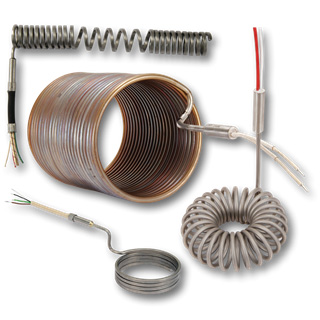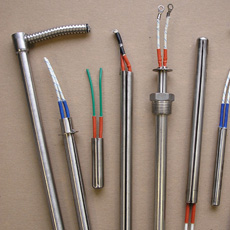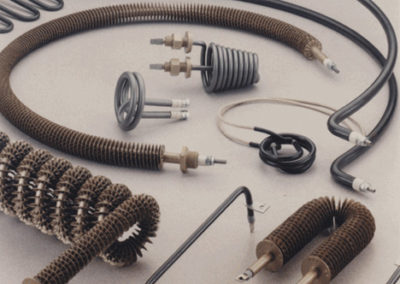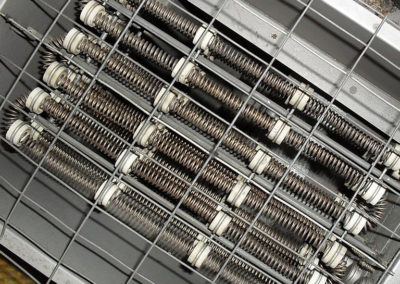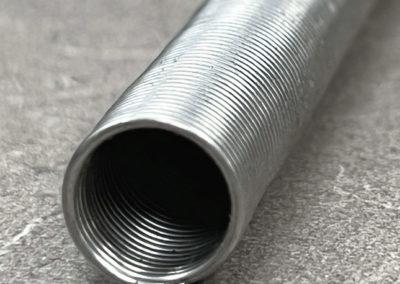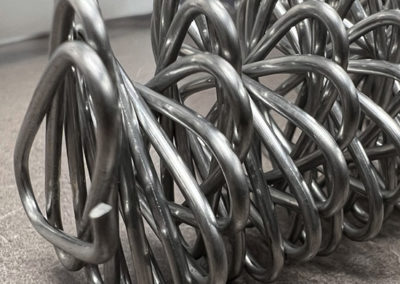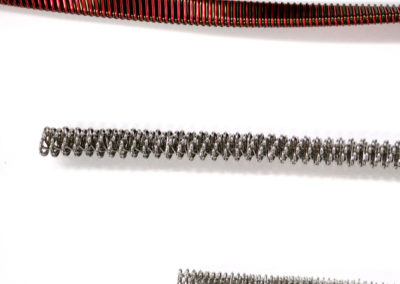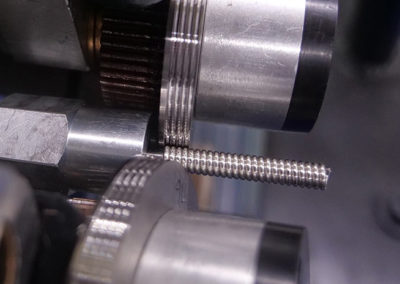Electric Coil Heating Industry
About the Electric Coil Heating Industry
 Many of today’s appliances are asked to work the moment we flip a switch. It’s an instantaneous lifestyle that we sometimes take for granted, making it easy to overlook a whole host of important appliances that give us warmth, comfort and convenience. Heating elements belong to a class of often unseen components whose function is to harness electricity to generate heat. Gadgets like space and industrial heaters, ovens, kilns, stovetops, hair dryers, and kettles all function thanks to built-in heating elements. The heart of a heating element is a specially designed metallic component known as an electric coil.
Many of today’s appliances are asked to work the moment we flip a switch. It’s an instantaneous lifestyle that we sometimes take for granted, making it easy to overlook a whole host of important appliances that give us warmth, comfort and convenience. Heating elements belong to a class of often unseen components whose function is to harness electricity to generate heat. Gadgets like space and industrial heaters, ovens, kilns, stovetops, hair dryers, and kettles all function thanks to built-in heating elements. The heart of a heating element is a specially designed metallic component known as an electric coil.
Some electric coils are submerged in water (electric kettles). Others sit in open spaces (infrared heaters). Some are bare wire (space heaters), while others are coated in magnesium salts or sheathed in ceramic (stovetops and oven elements). Regardless of the final form, what matters is that there’s a metallic component channeling electricity inside. And importantly for us at Platt Coiler, very often that component isn’t just straight wire, it’s coiled.
What are heating elements?
The short version is that heating elements are components that convert electricity to heat. The long version is a bit more complicated.
The science of conductivity places every material on a spectrum that’s bounded by conductors on one end, and insulators on the other. On the farthest point on the conductor end of the spectrum we find materials that let electricity pass through them with zero resistance – in other words, perfectly conductive materials. The other end is home to materials that mount a perfect resistance to any electrical current running through them. These materials are so anti-conductive that you could hold a rod of this material to a lightning bolt, and you (theoretically) wouldn’t feel the slightest shock. Materials on this end are called insulators.
All materials fall somewhere on this spectrum, and very often their spot on the spectrum is a big factor in determining how they’re used. Once we have a clear understanding of the roles of conductors and insulators, we can build resistors. Drawing on the science of conductivity, resistors are man-made electrical appliances, like coiled wire, that are designed to balance conduction against insulation to offer the right amount of opposition to a current flow.
Below from left: Coiled heating components (Tempco); cartridge heater components (Dalton Electric); Coiled heating components (Heatrex); 30 kW resistance heating coils (Kristoferb at English Wikipedia)
Why is electricity so important to heating elements?
 Heating elements are made of materials that conduct electricity relatively well, but not very well. In fact, they’re designed to control the speed of electrons moving through them (i.e., electrical current) with predictable accuracy. In other words: they conduct electricity in a way that can be easily measured and replicated. Why are heating elements designed to be mediocre at both conducting and resisting? Because by resisting electricity at just the right rate, heating elements release heat as a byproduct of electric energy loss. It’s the very act of the electrons laboring to pass through the metal that creates heat.
Heating elements are made of materials that conduct electricity relatively well, but not very well. In fact, they’re designed to control the speed of electrons moving through them (i.e., electrical current) with predictable accuracy. In other words: they conduct electricity in a way that can be easily measured and replicated. Why are heating elements designed to be mediocre at both conducting and resisting? Because by resisting electricity at just the right rate, heating elements release heat as a byproduct of electric energy loss. It’s the very act of the electrons laboring to pass through the metal that creates heat.
Think of heat generation as electrons sweating; as they struggle to move along the flowline of electric current, they sweat and thereby give off energy in the form of heat. So, what we get from resisting electricity at just the right rate is heat. Heat is what happens to electric energy when we oppose a current with the right material, at just the right rate. As you can see, it’s a balancing act between resisting and conducting.
In fact, with the right material parameters, this process of converting electric energy to heat energy can have something called a ‘coefficient of performance’ of 1.0. What this means is that there is zero energy wasted in the conversion of electricity to heat; each unit lost in electricity is a unit gained in heat. This efficiency factor is another reason why electric heating elements are so important: compared to other methods of generating heat, like burning fuel, they embody sustainable energy use.
Why is coiling important in the manufacture of heating elements?
Now, let’s examine why coiling is an essential ingredient in many types of resistance wire. Why do we build machines that take straight wire or ribbon and curl them like fusilli pasta or a pig’s tail? Because coiled wire is one of the most important characteristics in attaining the perfect resistance that we want from heating elements. By resisting the moving electrons (e.g., the electrical current) with the desired coiling frequency, we can cause the electrons to collide with the structural body of the metal even more intensively. These collisions slow the electrons down and create heat.
 To visualize how coiling increases resistivity, think of driving on a curvy mountain road: all the stopping and starting, slowing (maybe even bumping into guardrails) means it takes longer to traverse, and your gas expenditure would be significantly higher than on a straight road. Moving around bends and forcing your way through an indirect path requires much higher energy expenditure (in the case of the mountain road, more gas; in the case of coiling elements, more electrical energy). By making the electrons struggle, we force them to release energy, which comes off as heat – heat to bake your pizza, boil your water or dry your hair.
To visualize how coiling increases resistivity, think of driving on a curvy mountain road: all the stopping and starting, slowing (maybe even bumping into guardrails) means it takes longer to traverse, and your gas expenditure would be significantly higher than on a straight road. Moving around bends and forcing your way through an indirect path requires much higher energy expenditure (in the case of the mountain road, more gas; in the case of coiling elements, more electrical energy). By making the electrons struggle, we force them to release energy, which comes off as heat – heat to bake your pizza, boil your water or dry your hair.
In order to configure a wire to work according to a certain wattage or heat range, we adjust characteristics of the coils, such as: the length and diameter of the element itself, and the diameter and pitch of the coils. Having certain exact variables at hand, like wire gage and ohmage (resistivity) of the material, we can calculate exactly how long the coiled wire must be to achieve the desired resistance for a given application. Once the wire is coiled, we can fine-tune the resistor’s parameters through another post-coiling process called ‘stretching’. Stretching allows operators to shape a coiled wire to its final form according to the dimensions required in the end appliance. A coil manufacturer’s ability to toggle these wire parameters depends on a baseline level of uniformity in the coils. Without coil consistency, there is no temperature consistency inside a heating element, and inconsistent coils can cause performance and safety issues.
Another variable that affects resistivity is wire thickness, but this alone is not enough for most applications. The narrowness of thin wires is a naturally resistive characteristic because with thinner wire, electrons have less space to move in. This is another reason why coiling is so important: if our goal was simply to create maximum resistance, we could be content with just manufacturing thin wire for our applications. But thin wire isn’t always practical in real-world products. If a particular heating element calls for a thicker wire diameter, we must create resistance with material selection and, most importantly, with the appropriate coiling characteristics.
Below from left: Simple electric heater coil; Complex electric heater coil; Various heater coil configurations; Platt Coiler coiling an electric heating component
Why is material selection important for heating elements?
In addition to coiling profile, material selection is at the very heart of what makes an effective heating element. We are looking for very specific characteristics: the material should have a high melting point, and it shouldn’t corrode after being heated over and over again. It’s also very important that its resistance level doesn’t change too much as it gets hotter, because that would reduce consistency of performance. Materials nearly always become more resistive at higher temperatures, but we try to control that tendency in heating elements. Finally, a good coiling material doesn’t expand too much when heated. All metals undergo some form of thermal expansion, but in our case this is something we want to minimize. Why? Because design specifications are often tailored very deliberately to specific use cases.
The most common material used to shape electric coils is NiCr (also known as NiChrome, or Nickel Chrome). NiCr is roughly 80% nickel and 20% chromium. The combination of these two metals in an 80/20 proportion produces heating elements that meet the criteria mentioned above better than most other metals. Other less common materials are Kanthal (FeCrAl – iron/chromium/aluminum) and cupronickel (CuNi – copper/nickel).
If the application calls for it, heating coils can be insulated by a ceramic sheath or placed inside a tubular element. In these cases, the target medium will come into contact not with the coil directly, but instead with the metal tube or ceramic sheath around it. In the case of a metal tube, it accepts both the electrical and thermal heat transfer. Ceramic, being an insulator and not a conductor, stops electricity from entering it, while still allowing for thermal energy transfer. In other words, ceramic gets hot but doesn’t transfer significant voltage. You wouldn’t want your stovetop pots and pans to be electrified, would you?
Other names for electrical heating are Joule heating, resistive heating or ohmic heating. Now that you understand the physical process at work, these words will start to make more sense: James Prescott Joule was an English scientist and engineer who first suggested that heat could be generated using an electric current. And ohmic heating? Easy: ohms are the units of measurement that the scientific community uses to measure resistance in a material.
The heating element supply chain
 What types of companies are responsible for bringing electric heating to your homes and businesses? It all starts with resistance wire. There are companies dedicated to alloying and extruding the most popular wire grades used in heating applications; nichrome, copper nickel, chrome aluminum, as well as some of the less commonly used grades, like pure copper, bronze, brass, and stainless steel. Generally, diameters range from the very thin (fractions of a millimeter) to nearly an inch thick.
What types of companies are responsible for bringing electric heating to your homes and businesses? It all starts with resistance wire. There are companies dedicated to alloying and extruding the most popular wire grades used in heating applications; nichrome, copper nickel, chrome aluminum, as well as some of the less commonly used grades, like pure copper, bronze, brass, and stainless steel. Generally, diameters range from the very thin (fractions of a millimeter) to nearly an inch thick.
The companies that purchase and coil the wire are either job shops or OEM companies. Job shops are manufacturing firms that handle batches of custom orders for customers requiring specialized components. Because not every appliance manufacturer has the floor space or the constant need for mechanized coiling, job shops often step in to provide intermediate components, like coils, that go into a customer’s final product. OEM (original equipment manufacturing) companies that offer products with electrical heating elements may order coils from a job shop, or may instead opt to have an automated coiling machine in house.
Spring coilers, like the World Model 3000, are often bought and ultimately operated by the very same companies who need resistance wire in their appliances. Because they have such constant need for them, manufacturers of heating and cooling systems, space heaters, kilns, household ovens and toasters own and operate mechanized coiling machines on their shop floors. Owning a machine like the World Model 3000, instead of ordering pre-coiled resistance wire, gives manufacturers the flexibility to modify wire and coil type, either for an assortment of standardized appliances, or custom appliances that are built to order.
The appliances these manufacturers produce make us more comfortable and safer at home. They also allow us to carry out advanced industrial processes that would otherwise be impossible. With the help of automated coiling machines like the Platt World Model 3000, manufacturers can create consistent, dependable and long-lasting electric heating appliances for decades to come.

